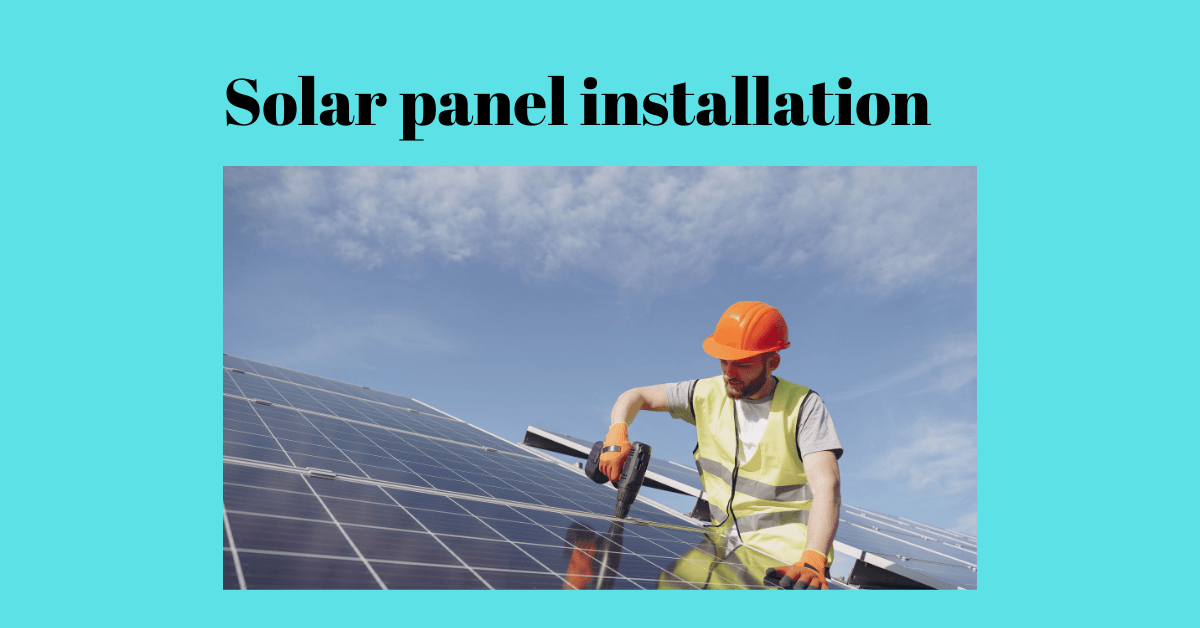Solar panel installation is becoming an increasingly popular way for homeowners and businesses to reduce their energy costs and reduce their carbon footprint. However, before installing a solar panel system, it is important to understand the requirements and steps involved in the process. we will discuss the requirements for solar panel installation, the step-by-step procedures, and the precautions and safety measures that should be taken during the installation process.

Requirements for Solar Panel Installation
Before installing a solar panel system, there are a few requirements that must be met. The first requirement is that the property must have a suitable roof or ground space for the solar panels. The roof or ground space must be able to support the weight of the panels, as well as have enough space to accommodate the number of panels needed to meet the energy needs of the property.

Another requirement is that the property must have access to a reliable power source. This can be either a utility grid or a backup generator. The solar panel system will need to be connected to this power source in order to function properly.
Finally, before installing a solar panel system, it is important to check the local zoning laws and building codes to ensure that the installation complies with all regulations. This can include obtaining the necessary permits and approvals from local authorities.
Step-by-Step Procedures for Solar Panel Installation
Once the requirements for solar panel installation have been met, the next step is to begin the installation process. The following is a general overview of the step-by-step procedures for installing a solar panel system:
- Site assessment: The first step in the installation process is to conduct a site assessment. This involves assessing the property’s roof or ground space to determine the most suitable location for the solar panels. The site assessment will also include determining the orientation and tilt of the panels to ensure they are in the best position to maximize energy production.

- Design and planning: Once the site assessment is complete, the next step is to design and plan the solar panel system. This involves determining the number of panels needed to meet the energy needs of the property, as well as the size and layout of the system.
- Equipment procurement: After the design and planning stage, the next step is to purchase and procure the necessary equipment for the solar panel system. This includes solar panels, inverters, batteries, wiring, and other components.
- Installation: Once the equipment has been procured, the next step is to install the solar panel system. This involves mounting the panels on the roof or ground space, connecting the wiring, and installing the inverters.
- Testing and commissioning: After the installation is complete, the final step is to test and commission the solar panel system. This involves checking that all components are functioning properly and that the system is producing the expected amount of energy.
Precautions and Safety Measures for Solar Panel Installation
While solar panel installation is a relatively safe process, there are a few precautions and safety measures that should be taken to ensure that the installation is done safely and correctly. The following are some of the precautions and safety measures that should be taken during the installation process:
- Safety equipment: It is important to wear the appropriate safety equipment during the installation process. This includes safety glasses, hard hats, gloves, and protective clothing.
- Ladder safety: When working on a rooftop, it is important to use a sturdy ladder and to ensure that it is properly secured.
- Electrical safety: When working with electrical components, it is important to follow all safety procedures to avoid electrical shocks or fires.
- Fall protection: When working on a rooftop, it is important to use fall protection to ensure that the installer is protected from falling. This can include using harnesses, guardrails, or other safety equipment.
- Weather safety: It is important to monitor the weather during the installation process and to postpone the installation if the weather is not safe. High winds or heavy rain can make the installation process dangerous and should be avoided.
- Proper installation: It is important to ensure that the solar panels are installed correctly and securely to avoid any damage or accidents. This includes making sure that the panels are properly secured to the roof or ground space, and that all electrical connections are properly made.
Conclusion
Solar panel installation is a great way to reduce energy costs and reduce carbon emissions. However, before installing a solar panel system, it is important to understand the requirements and steps involved in the process. By following the proper procedures and safety measures, homeowners and businesses can ensure that their solar panel system is installed safely and correctly, and that it will function properly for many years to come

